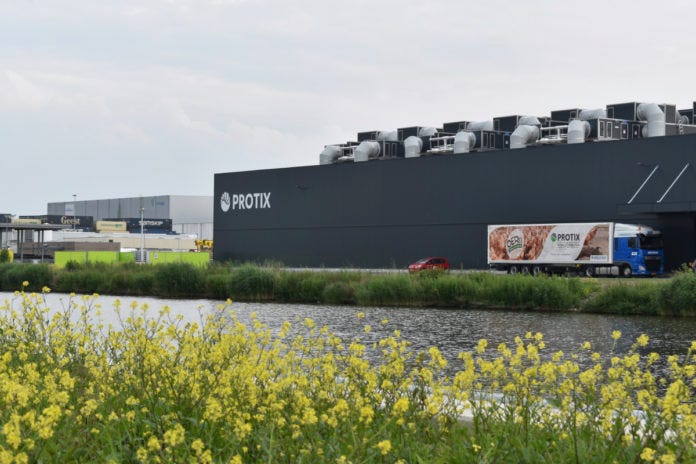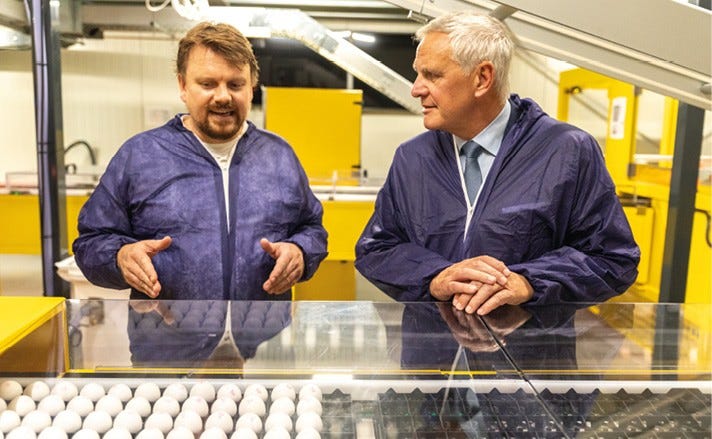Bioeconomy Startups: A Dive into De-risking Strategies
Extracting Lessons from Established Startups
Like every other industry, the bioeconomy is facing its own challenges. However, as in any other sector, these challenges are being tackled in a manner specific to the bioeconomy. Companies here have developed strategies to overcome them and minimise the resulting risks. So what are these strategies, what risks do they aim to minimise and how do they help companies to overcome their challenges?
Start-ups founded on the basis of bio-based materials play a key role in the emerging bioeconomy. Yet they face a number of challenges, particularly when it comes to scaling up technologies and processes. Unlike traditional chemical processes, biological processes such as fermentation are extremely heterogeneous and their complexity makes it difficult to easily model or predict all parameters.
Engineering scale-up de-risking
As a general rule, the key to successfully scaling up a bioeconomy start-up therefore lies in having a clear understanding not just of the product itself, but also of the process involved in creating that product, so that the uncertainties involved in scaling up that process can be minimised. This makes it possible to monitor certain parameters and to find a sweet spot. Processes in the bioeconomy in particular are often difficult to predict, especially with regard to the variability of feedstocks and organisms. The transition from pilot phase to demonstration phase and ultimately to commercial scaling is typical of start-ups in this field – and some of these stages cannot be skipped.
Collaboration with research institutions or Contract Manufacturing Organisations (CMOs) can play a crucial role in outsourcing certain processes and spreading the risk when scaling up engineering processes. Cooperation with established companies and their own research and development units is another possibility. Uncertainty can be minimised through joint ventures and clear guidelines for scaling. In practice, this means companies entering into joint cooperation and off-take agreements, which define the type, quantity and quality of the products to be produced in order to meet customer requirements. Consideration should also be given to fully outsourcing individual production steps to external parties. For example, many companies work with CMOs to outsource fermentation processes. Specialised companies are commissioned to replicate the process based on the parameters provided. Collaborating in this way allows start-ups to focus on their core strengths.
However, the availability of fermentation capacities is proving a particular challenge at the moment. Yet in spite of these issues, partnerships like these are becoming more common. The Spanish company Heura, which operates in the alternative protein sector, is one example of an enterprise that uses CMOs for its production. The benefits of this approach are faster production and a business model with low capital expenditure (capex). Such scale-up strategies are becoming increasingly mainstream and are helping to bring innovative bioeconomy products to the market quickly and successfully.
Feedstock de-risking
Another key issue specific to the bioeconomy and closely linked to the scaling of start-ups is the risks associated with finding and providing feedstocks. The question here is whether to opt for a centralised or decentralised provision model. In other words, whether to build a large factory or several smaller facilities and whether to use local or globally sourced feedstocks. If a customer demands large quantities of a consistent product, start-ups that rely on a variety of local feedstocks could soon reach their limits. In these cases, it makes sense to enter into joint ventures with established companies that have large facilities and can commit to providing consistent feedstock. There are numerous advantages to a steady-stream partnership like this. It attracts the interest of strategic investors and creates a sound basis for protecting the company against competitors.
When a bioeconomy start-up begins cooperating with a large company and, in doing so, gains access to their side streams, this creates a competitive advantage that is difficult to get past. One prominent example is Protix – a company specialising in insect breeding – which recently entered into a partnership with Tyson Foods, a world leader in beef, poultry and pork production. This partnership includes the establishment of a joint venture to build a facility for insect ingredients (ingredients from insects: proteins, lipids) in the USA. Alongside this collaboration, Tyson Foods is investing in Protix to accelerate the company’s global expansion ambitions. In addition, by-products that Tyson Foods already generates are immediately put to use as feedstock for the insects.
Bioeconomy start-ups with specific product ideas can harness and build on these emerging partnerships, allowing them to move away from highly distributed side streams towards the strategic use of these resources as an essential component of large companies’ business strategies. A link to a larger company with a consistent, industrially standardised feedstock supply also guarantees the consistency of the end product, a particularly important consideration in the bioeconomy.
Product-to-market de-risking
Another critical aspect of the bioeconomy is the risks associated with bringing products to market. The product must meet the requirements of the market, which may sound like stating the obvious, but in fact is not: start-up founders are often so convinced of their innovation that they fail to correctly assess the market demand. Product consistency is another factor that plays a decisive role in de-risking a potential market fail. When a customer requests large quantities of a product, it is important to ensure that every unit of that product is consistent and meets quality standards. If the business model is only profitable for a limited production volume and difficulties arise during scaling, this can pose significant risks for market entry.
Another proven de-risking approach is to develop clear strategies for the market launch right from the outset. This includes identifying potential target markets, assessing market trends and analysing competitors. Alliances and partnerships can also help to facilitate a market entry, especially when it comes to accessing distribution channels and opening up new markets. The commercialisation of bioeconomy products also requires greater awareness of environmental and consumer concerns. The sustainability aspect of bio-based products needs to be communicated clearly and convincingly. This is particularly important as consumers (and therefore also producers) are increasingly interested in environmentally friendly and sustainable products.
One interesting example of this is Peel Pioneers, a company that converts orange peels – a waste stream – into fibers for food ingredients. The upcycling process and the sustainability aspect, in conjunction with precisely defined product specifications and a targeted approach aimed at specific sub-markets such as bakeries or plant-based meat, is an example of how risk minimisation mechanisms can be successfully implemented in product-to-market strategies.
Financial de-risking
One crucial aspect in de-risking bioeconomy start-ups is, of course, the financial aspect, and it requires partners and investors who understand not only the concept of highly specialised bioeconomy engineering scale-ups, but also the capital-intensive requirements that usually go hand in hand with them. However, the question of how to raise the required capital is the responsibility of the CFO, who ideally knows exactly where to obtain the necessary funds.
A key aspect of financial de-risking is the ratio of capital employed to capex efficiency, known as the capex-to-efficiency ratio. The aim is to ensure that investments in facilities and production technologies are efficient and deliver an appropriate return, with the business model playing a decisive role in this respect. The question of whether it is always necessary for a company to operate capital-efficient production itself or whether it is better to offer licences is a key de-risking mechanism. It is vital to analyse from the outset how capital-intensive production would be in the event of upscaling and to structure the financing on this basis. If the business model relies on continuously building new factories and repeatedly raising capital to do so, this could be problematic in the long term and reduce the likelihood of success – provided that cost degression is difficult to achieve or can only be achieved with very high production capacities.
Alongside the search for investors, it is also important to consider other forms of funding, such as the EU’s Horizon Europe programme, which can be combined with complementary programmes available at national level, including structural and rural development funds, the ESIF and the Recovery and Resilience Facility under the EU‘s NextGenerationEU Covid recovery instrument. Using these funding mechanisms also minimises the risk for investors. The EIC Accelerator programme under Horizon Europe, Pillar 3 – Innovative Europe – could be particularly appealing for introducing external investors to bioeconomy start-ups, as it aims to help innovative SMEs, including start-ups, to realise their ideas in all sectors, including the bioeconomy. Another example is the European Investment Bank , which recently granted a loan of EUR 40 million to the company In Ovo to end the practice of killing male chicks. The EIB and the European Commission have also launched the European Circular Bioeconomy Fund, the first venture capital fund dedicated exclusively to the (circular) bioeconomy, taking up the challenge of unlocking the economic potential of this sector.
**This article was initially published on Going Public and has been subsequently adjusted for presentation here. Any updates or amendments are not reflective of the initial content's endorsement or approval.
Thanks for reading. Reach me with tips, questions, and feedback on Twitter or LinkedIn.
If you enjoy this newsletter, why not share it with your friends and co-workers?
The views expressed here are my own. All information contained in here has been obtained from publicly available information. While taken from sources believed to be reliable I have not independently verified such information and make no representations about the enduring accuracy of the information or its appropriateness for a given situation. This content is provided for informational purposes only, and should not be relied upon as legal, business, investment, or tax advice. Charts and graphs provided within are for informational purposes solely and should not be relied upon when making any investment decision. For questions simply reply to this email.







